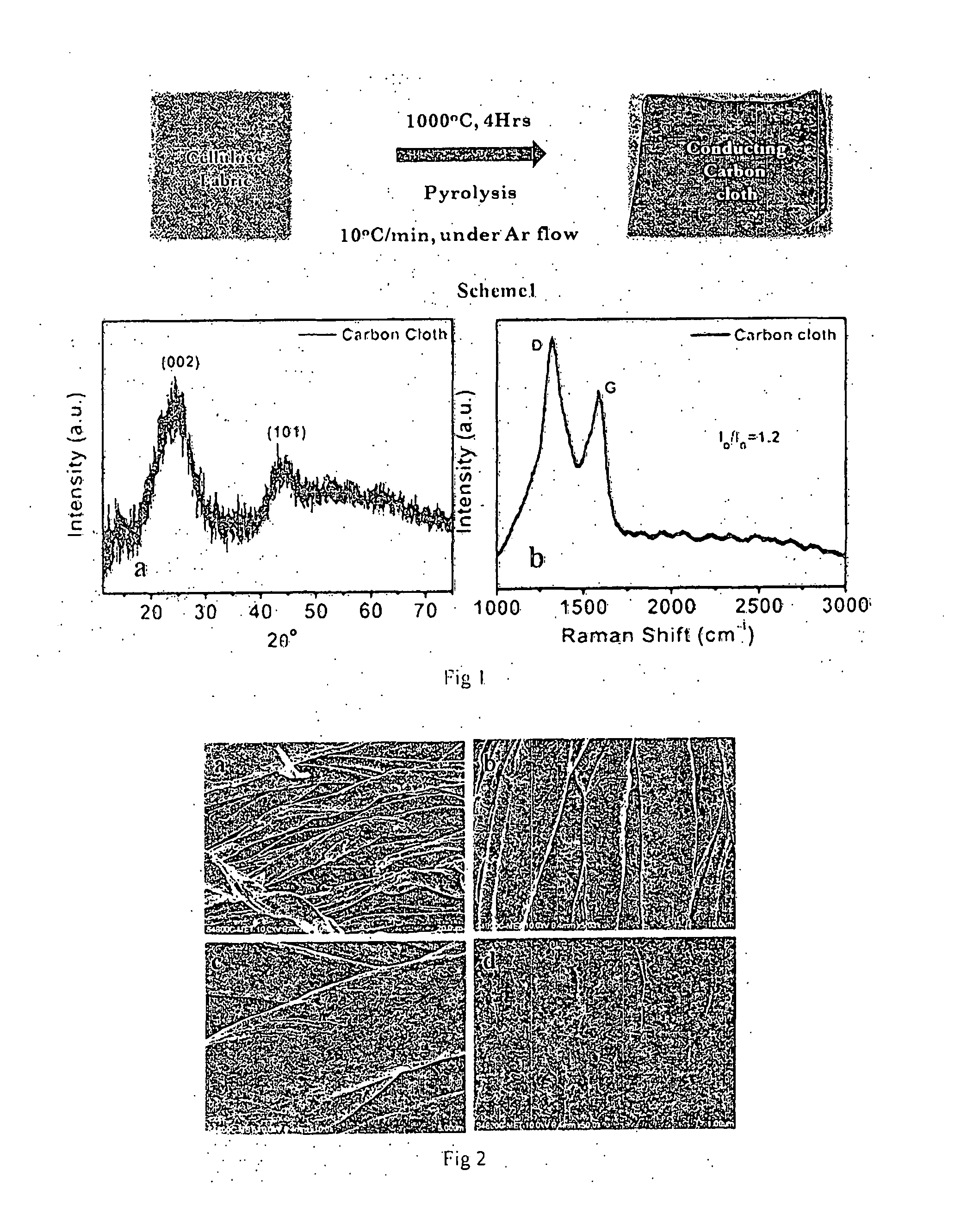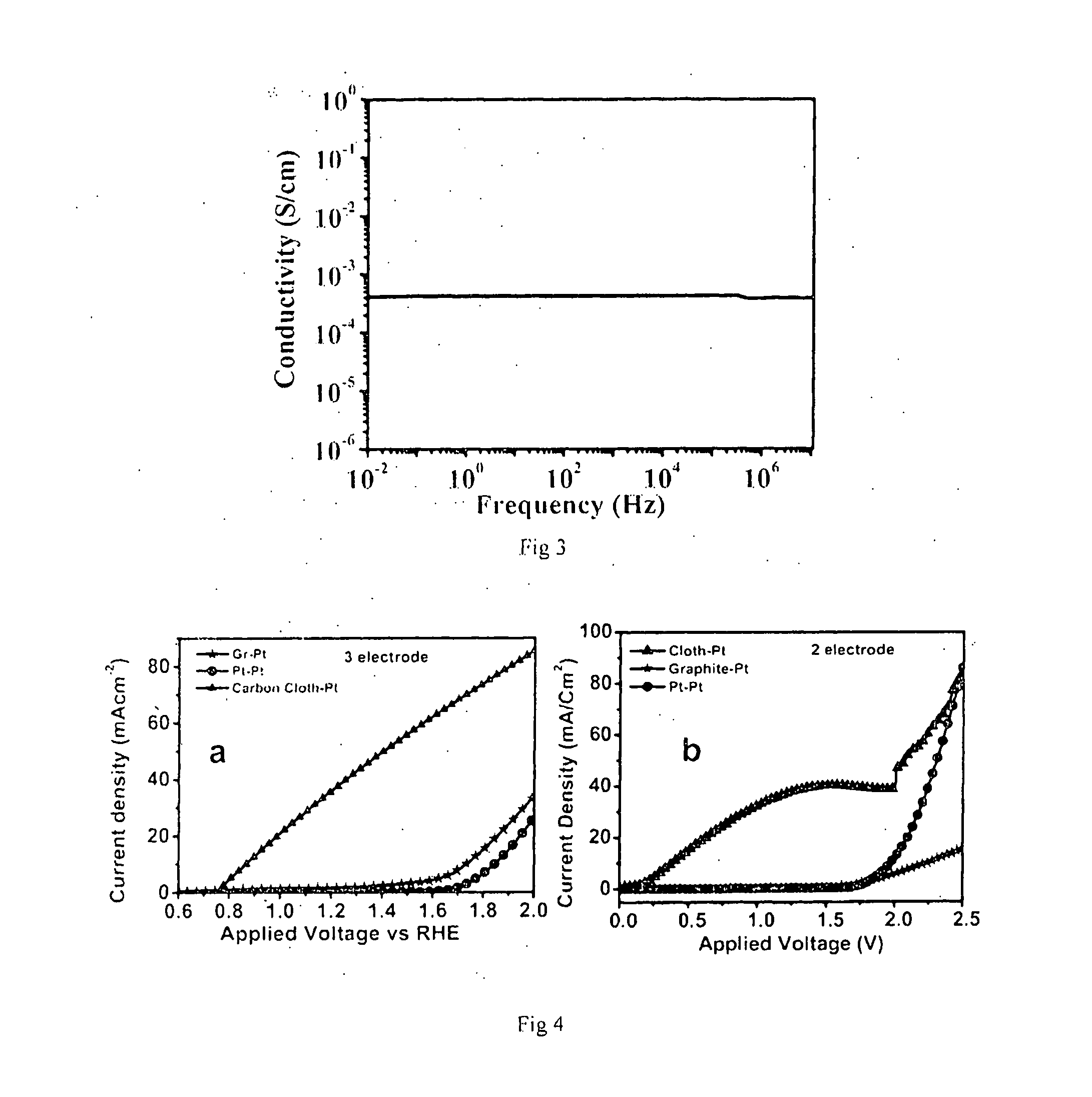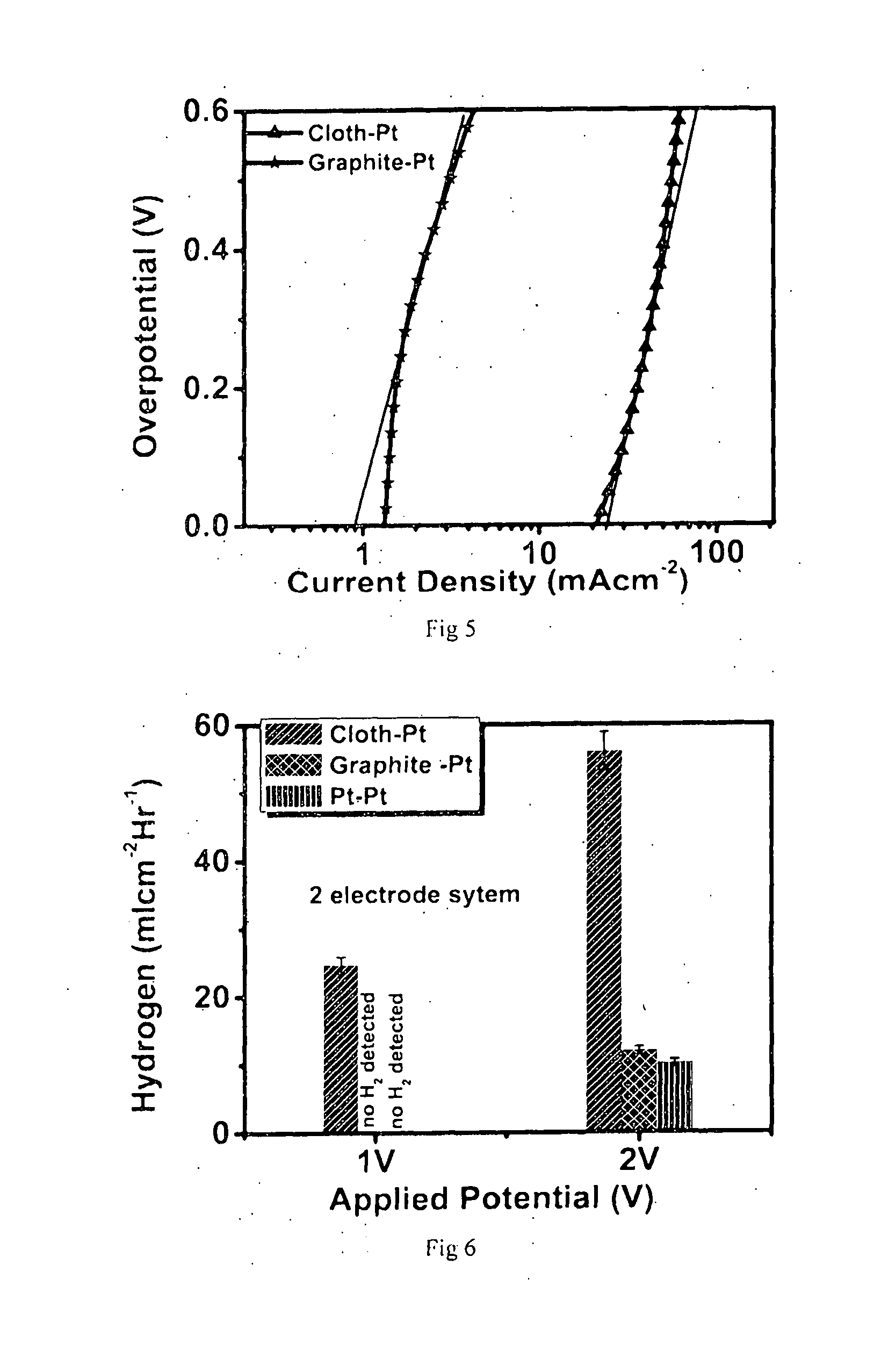Conducting Carbon Cloth Electrode for Hydrogen Generation and Dye Sensitized Solar Cells
a solar cell and carbon cloth technology, applied in the field of functional conducting carbon cloth, can solve the problems of energy-intensive, poor environmental impact, and still far from being efficient, and achieve the effect of simple, convenient and cost-effective fabrication
- Summary
- Abstract
- Description
- Claims
- Application Information
AI Technical Summary
Benefits of technology
Problems solved by technology
Method used
Image
Examples
example 1
Functional Conducting Cloth Synthesis
[0061]The cellulose fabric was placed in an alumina plate and was subjected to pyrolysis at 1000° C. for 4 Hr. The heating rate was 10° C. per min in a split tube furnace under continuous flow of argon gas. After the reaction was over a black colored conducting carbon cloth was obtained as in Scheme 1. It was characterized by several techniques and was directly used as an anode for water electrolysis process.
example 2
Variations in the Synthesis Parameters
[0062]Mostly cellulose fabric has been used for this work but many kinds of fabric such as rayon, natural silk etc may be used. Apart from the types of fabric, the heating rate and the temperature also affect the structure and order of defects in the carbon cloth. The variation, in the pyrolysis temperature has also been studied by heating the fabric at different temperature such as 600° C., 800° C. and such like with different rate of heating.
example 3
Characterization of the Conducting Carbon Cloth
[0063]The synthesized cloth material was characterized by X-ray powder diffraction using Philips X'Pert PRO diffractometer with nickel-filtered Cu Kα radiation, Raman spectroscopy using Lab RAM HR800 from JY Horiba, high-resolution transmission electron microscopy using IFEI, Tecnai F30, with 300 KV FEG and field-emission scanning electron microscopy (FESEM; Hitachi S-4200). The surface of cloth was examined by X-ray photoelectron spectroscopy on a VG scientific ESCA-3000 spectrometer using non monochromatized Mg Kα radiation (1253.6 eV) at a pressure of about 1×10−9 Torr. All the electrochemistry measurements were done with Autolab PGSTAT30 (Eco-Chemie).
PUM
| Property | Measurement | Unit |
|---|---|---|
| size | aaaaa | aaaaa |
| sub-threshold potential | aaaaa | aaaaa |
| sub-threshold potential | aaaaa | aaaaa |
Abstract
Description
Claims
Application Information
 Login to View More
Login to View More - R&D
- Intellectual Property
- Life Sciences
- Materials
- Tech Scout
- Unparalleled Data Quality
- Higher Quality Content
- 60% Fewer Hallucinations
Browse by: Latest US Patents, China's latest patents, Technical Efficacy Thesaurus, Application Domain, Technology Topic, Popular Technical Reports.
© 2025 PatSnap. All rights reserved.Legal|Privacy policy|Modern Slavery Act Transparency Statement|Sitemap|About US| Contact US: help@patsnap.com



